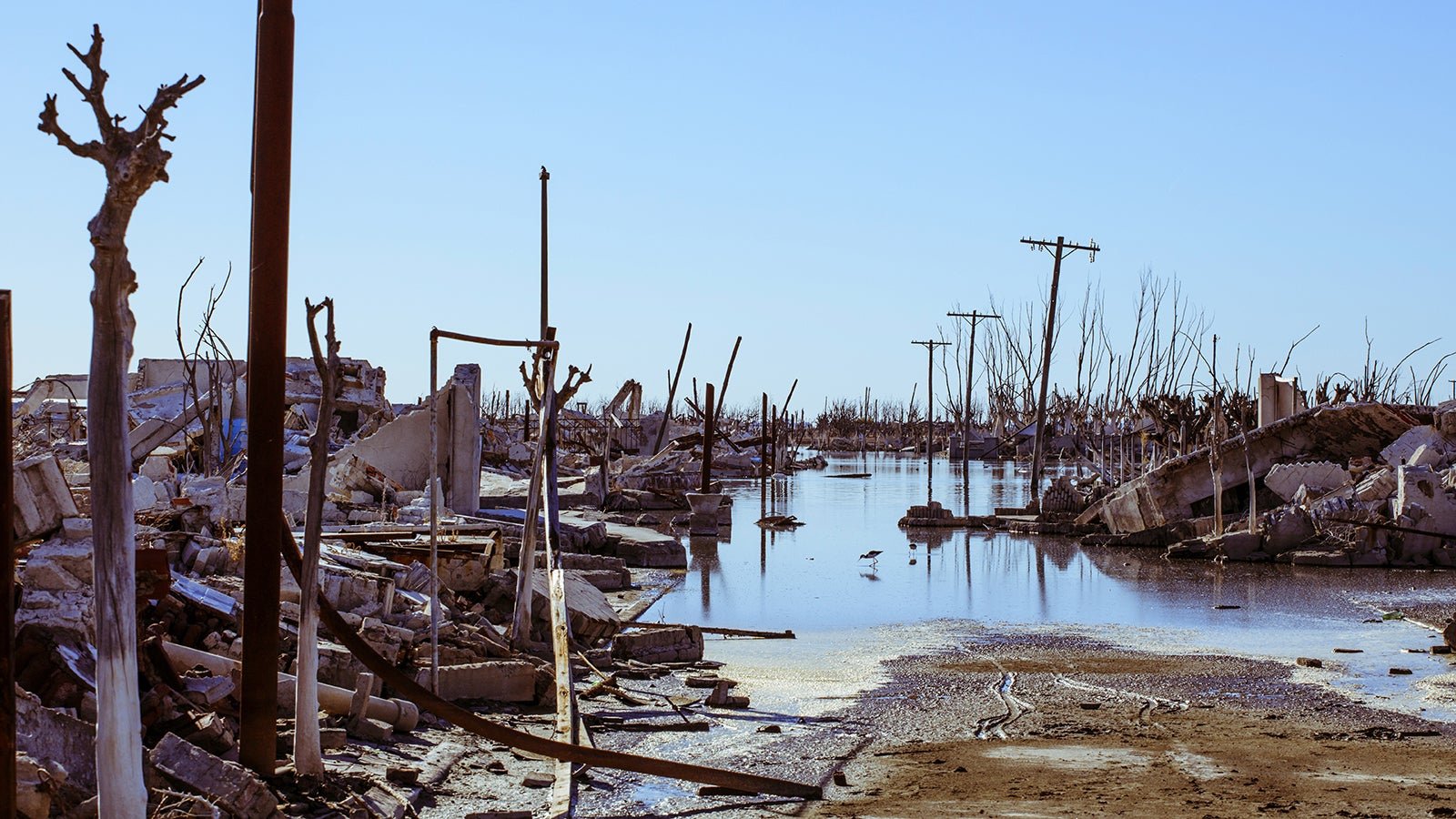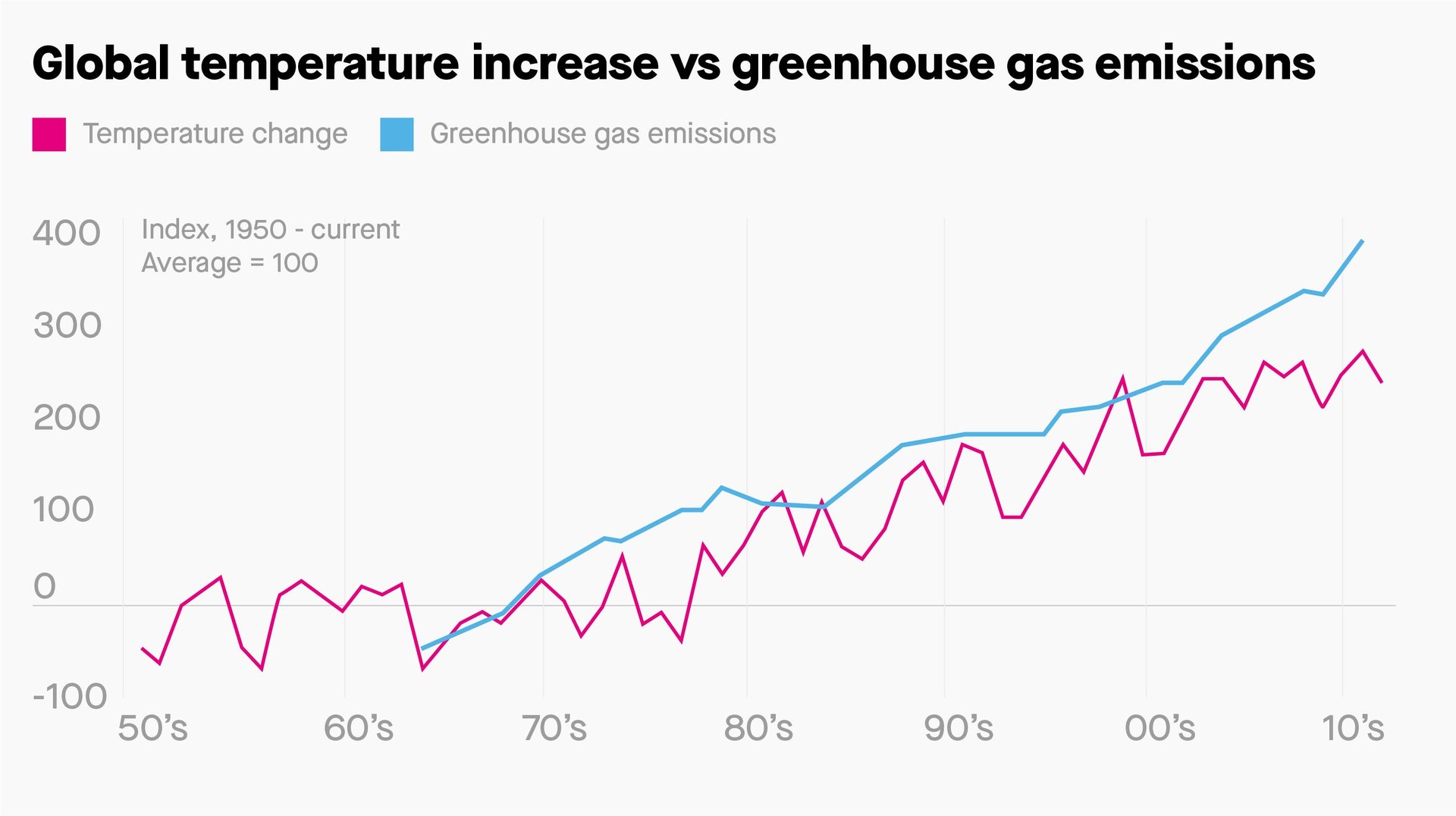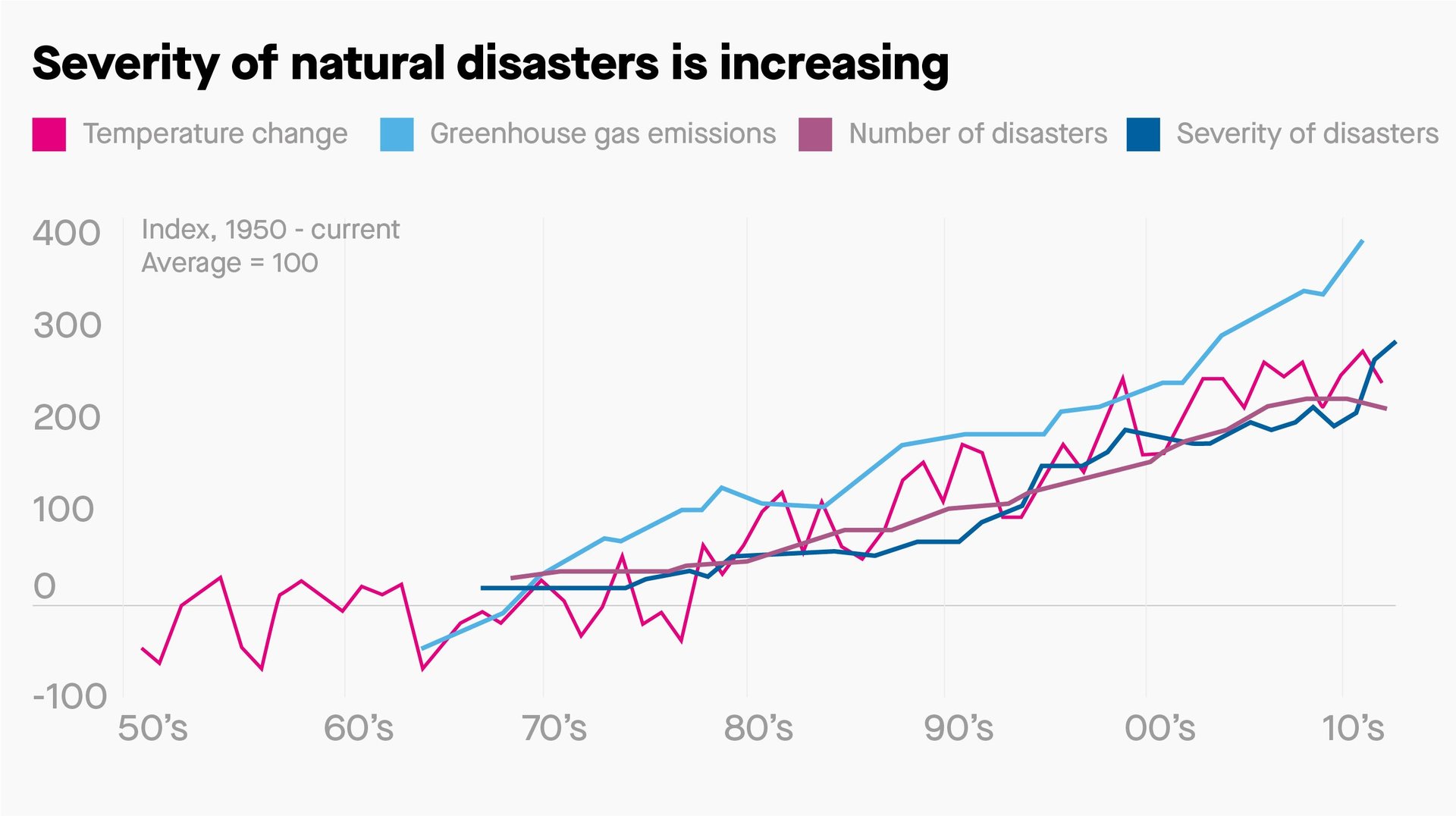The 10 industries most exposed to climate change related natural disasters
Golfball-sized hail. Wildfires that turn into infernos. Category 5 hurricanes.


Golfball-sized hail. Wildfires that turn into infernos. Category 5 hurricanes.
When we read news coverage of climate-fueled disasters, we’re struck by reports of immediate, tragic human consequences. That makes sense–safety and survival hits closest to home. But what’s often overlooked is the fact that these climate events set off financial reverberations. In other words, even if you’re lucky enough to have lived outside the disaster zone, your life–and livelihood–can still feel the effects of natural disasters.
Correlation is costly
Increased greenhouse gas emissions are likely to continue their upward trajectory, bringing with them a corresponding rise in temperatures. And as global temperature rises, investors can no longer afford to ignore the potential rising risk climate change holds for companies’ physical assets.

The current upward trend in greenhouse gas emissions means that a 0.6 degree temperature rise is essentially unavoidable.
This cause and effect is mirrored by another: the increase of climate-related natural disasters and economic damage. Recent years have seen record-shattering weather events. 2018, the hottest La Niña year on record, saw California’s largest wildfire to date, the Indian state of Kerala’s worst flooding in nearly a century, and the highest recorded temperature in African history.

And, over the past 40 years, the damage resulting from disasters has risen more than 4%. We can predict that the frequency and severity of climate change-related disasters will increase.

Protective Measures
The evidence is clear, so the question faced by any smart company is: What would it cost to insure against the physical risks posed by climate change for the remaining life of our assets?
The Sustainability team at Schroders, a UK-based investment manager, undertook extensive research into the impact on certain industries, based on analysis of around 11,000 listed companies across the world. Predictably, capital-intensive sectors located in more vulnerable geographic areas would be more affected–such as oil and gas and utilities, which have expensive and exposed infrastructure.

Industries like technology and personal goods (which can be located far from weather events) would be only minimally impacted.
A Threat That Cannot Be Ignored
Especially for more exposed companies, it’s vital that forethought and planning occurs now, not later. Climate-related physical damage is a clear threat and the tragic fact is that it will only increase.
But, armed with the right assessment and analysis, investors can make calm, considered decisions about a volatile future–the value of investments and the income from them may go down as well as up and investors may not get back the amounts originally invested.
Discover more here.